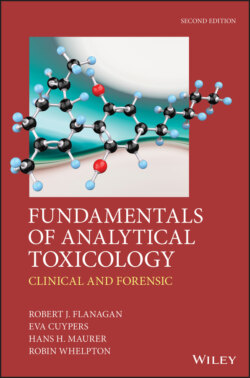Читать книгу Fundamentals of Analytical Toxicology - Robin Whelpton - Страница 21
1.2.3 Ethanol and other volatile substances
ОглавлениеEnzymatic methods for plasma ethanol using alcohol dehydrogenase with spectrophotometric measurement of a coenzyme, for example, are available in kit form for clinical chemistry analyzers. GC analysis of ethanol either by direct injection of blood or urine diluted with deionized water, or by static headspace sampling (HS-GC), is also widely used, particularly in forensic work. GC-FID is advantageous because methanol, 2-propanol, and acetone may be separated and measured simultaneously. Methanol poisoning from ingestion of synthetic alcoholic drinks is one of the few causes of acute poisoning ‘epidemics’ and measurement of blood methanol is important in confirming the diagnosis and in monitoring treatment (Section 22.4.1.2). Detection of high concentrations of acetone, itself a metabolite of 2-propanol, and vice versa, may aid the diagnosis of ketoacidosis (Belsey & Flanagan, 2016).
Many more volatile compounds may be encountered in acute poisoning arising, for example, from deliberate inhalation of vapour in order to become intoxicated [volatile substance misuse, ‘glue sniffing’, solvent abuse, inhalant abuse, volatile substance abuse (VSA)]. Some of these volatile compounds have metabolites, which may be measured in urine in order to assess exposure, notably hippuric and methylhippuric (toluric) acids (from toluene and the xylenes, respectively) and trichloroacetic acid (from trichloroethylene). However, most volatile substances are excreted unchanged in exhaled air and therefore whole blood is the best sample for detecting and identifying these compounds (Section 22.4.23).
